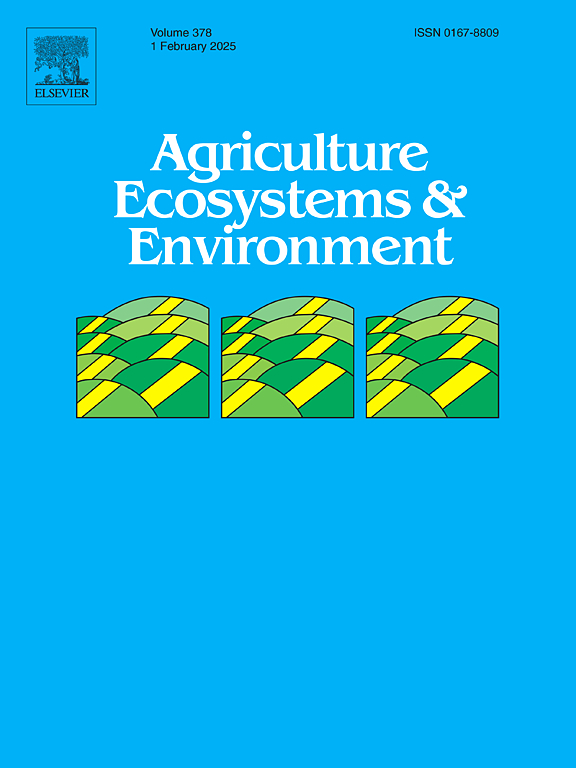Thresholds for the relationships between soil trace elements and ecosystem multifunctionality in degraded alpine meadows
IF 6
1区 农林科学
Q1 AGRICULTURE, MULTIDISCIPLINARY
引用次数: 0
Abstract
Trace elements in soil are known to affect ecosystem functions, such as soil microbial structure, function, and grassland productivity. However, it is largely unknown whether soil trace elements cause abrupt or gradual changes in ecosystem multifunctionality (EMF) in degraded alpine ecosystems and how they depend on environmental drivers. In this study, we investigated the vegetation and soil conditions in 172 sample squares in an alpine meadow area on the Tibetan Plateau, China. This study aimed to analyse the change characteristics in alpine meadow EMF and soil trace element contents at different degradation stages. Furthermore, we evaluated the soil trace element contributions to alpine meadow EMF. This study revealed that EMF decreased with increasing degradation, whereas total soil micronutrient content exhibited the opposite trend. A threshold was identified for regulating EMF using micronutrients during alpine meadow degradation. Soil micronutrients enhanced EMF during the initial stages of alpine meadow degradation. However, as degradation progressed, elevated soil micronutrient levels impeded EMF. In addition, climate can modulate soil trace elements through plant diversity and soil physicochemical properties, thereby influencing the role of soil trace elements in driving EMF. Soil physicochemical properties contributed the most to EMF, whereas soil trace elements, rather than plant diversity, significantly influenced EMF. Overall, soil trace elements in the degraded meadows had a significantly negative impact on EMF.
退化高寒草甸土壤微量元素与生态系统多功能性关系的阈值
土壤中微量元素影响生态系统功能,如土壤微生物结构、功能和草地生产力。然而,在退化的高寒生态系统中,土壤微量元素是否会引起生态系统多功能性(EMF)的突变或渐变变化,以及它们如何依赖于环境驱动因素,在很大程度上是未知的。本研究对青藏高原高寒草甸地区172个样地的植被和土壤条件进行了调查。本研究旨在分析高寒草甸不同退化阶段EMF和土壤微量元素含量的变化特征。此外,我们还评估了土壤微量元素对高寒草甸电磁场的贡献。研究表明,土壤电动势随土壤退化程度的增加而降低,而土壤总微量元素含量则相反。确定了在高寒草甸退化过程中使用微量营养素调节EMF的阈值。在高寒草甸退化初期,土壤微量元素对EMF有增强作用。然而,随着降解的进展,土壤微量元素水平升高阻碍了电磁场。此外,气候可以通过植物多样性和土壤理化性质调节土壤微量元素,从而影响土壤微量元素对电磁场的驱动作用。土壤理化性质对电磁场的影响最大,土壤微量元素对电磁场的影响比植物多样性更显著。总体而言,退化草甸土壤微量元素对EMF具有显著的负向影响。
本文章由计算机程序翻译,如有差异,请以英文原文为准。
求助全文
约1分钟内获得全文
求助全文
来源期刊

Agriculture, Ecosystems & Environment
环境科学-环境科学
CiteScore
11.70
自引率
9.10%
发文量
392
审稿时长
26 days
期刊介绍:
Agriculture, Ecosystems and Environment publishes scientific articles dealing with the interface between agroecosystems and the natural environment, specifically how agriculture influences the environment and how changes in that environment impact agroecosystems. Preference is given to papers from experimental and observational research at the field, system or landscape level, from studies that enhance our understanding of processes using data-based biophysical modelling, and papers that bridge scientific disciplines and integrate knowledge. All papers should be placed in an international or wide comparative context.
 求助内容:
求助内容: 应助结果提醒方式:
应助结果提醒方式:


